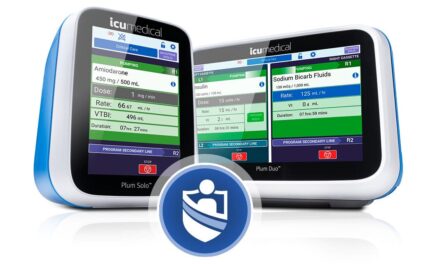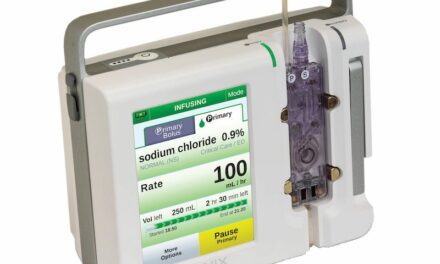As technology advances, systems engineering offers a framework for reducing risk, improving performance, and enhancing patient outcomes.
By Rajani Kumar Sindavalam
Infusion pumps are essential instruments in contemporary healthcare, facilitating the precise delivery of fluids, medications, and occasionally nutrients. Ranging from simple syringe pumps to advanced smart pumps equipped with integrated drug libraries and connectivity options, these devices are crucial for patient care in various clinical environments.
Nevertheless, the growing complexity of infusion pumps, spurred by the need for improved functionality and seamless integration within the healthcare system, presents considerable challenges. Risks to patient safety arise from medication errors, usability concerns, cybersecurity threats, and interoperability issues, which impede the complete achievement of their clinical capabilities.
Systems engineering—an interdisciplinary domain dedicated to the design, development, and management of intricate systems throughout their lifecycles—provides a systematic framework to tackle these challenges. By embracing a comprehensive viewpoint that considers all stakeholders, system elements, and their interrelations, the medical technology sector can facilitate the creation of safer, more user-centric, and genuinely intelligent infusion pumps.
Challenges in Infusion Pump Development
Developing infusion pumps is complex and necessitates a robust systems engineering methodology. These challenges include both technical and clinical dimensions, each with direct implications for patient safety and regulatory compliance:
- Safety-Critical Nature: Infusion pumps directly impact patient health. A malfunction—such as the over- or under-administration of essential medications—can have serious or life-threatening consequences. Safety must remain the top priority throughout every stage of development.
- Stringent Regulatory Requirements: Medical devices, including infusion pumps, are subject to rigorous oversight from regulatory bodies such as the US Food and Drug Administration and European Medicines Agency. Compliance demands extensive documentation, testing, and validation—core elements of systems engineering that ensure quality and accountability.
- Human Factors and Usability: These devices are often used in fast-paced clinical environments. Poorly designed interfaces, unclear alarms, or complex workflows increase the likelihood of error. Integrating human factors engineering into the design process helps ensure devices are intuitive and safe to use.
- Software Complexity: Modern pumps rely heavily on embedded software for drug delivery, alarms, and connectivity. As functionality expands, so does the potential for defects. Addressing this complexity requires disciplined software development practices.
- Interoperability and Data Integration: Infusion pumps must integrate with systems like EHRs and pharmacy platforms. Achieving seamless, secure interoperability requires careful design and validation to maintain data integrity.
- Cybersecurity Threats: Network-connected pumps are vulnerable to cyber threats that could impact functionality or expose patient data. Embedding robust security protocols from the start is essential.
- Lifecycle Management: Systems engineering must span the entire product lifecycle, including manufacturing, maintenance, and disposal. Ongoing oversight ensures continued performance and safety.
Putting Systems Engineering to Work
A systematic application of systems engineering principles helps navigate these challenges. The process begins with stakeholder analysis and requirements elicitation—identifying the needs of patients, clinicians, pharmacists, engineers, and regulators. For example, insights from ICU nurses can inform interface design and alarm functionality.
Functional analysis and system architecture design follow, breaking the pump into components such as fluid delivery, occlusion detection, user interface, and data transmission. A well-structured architecture promotes modularity, testability, and long-term maintainability.
Risk management is central. Structured tools like Failure Modes and Effects Analysis and hazard analysis help identify and mitigate risks early. For instance, analyzing potential failure points in the pump mechanism can support the development of more responsive occlusion detection.
Human factors engineering and usability testing ensure that the pump is intuitive and minimizes user error. Simulated clinical testing with representative users helps refine visual and auditory alarms and workflow steps.
Given the pump’s software dependence, software systems engineering is vital. This includes managing requirements, developing architecture, performing rigorous testing, and ensuring cybersecurity. Following standards like IEC 62304 and using secure coding practices reduces risk.
Verification and validation—from unit tests to system-level evaluations and clinical trials—confirm the device meets specifications and performs safely.
Configuration management and traceability maintain oversight of documentation, components, and changes across the lifecycle. Traceability matrices linking requirements to test cases and risk controls reinforce a disciplined development process.
Finally, post-market surveillance ensures continued device safety. Monitoring field performance, collecting feedback, and managing recalls allow for continuous improvement based on real-world data.
Powering the Next Generation of Smart Infusion Pumps
Emerging technologies such as artificial intelligence (AI), machine learning (ML), and improved connectivity are propelling the development of smart infusion pumps. Systems engineering ensures these innovations are integrated safely and effectively.
Predictive analytics powered by AI/ML can identify potential issues like occlusions or low medication levels before they occur. Systems engineering defines the requirements for these algorithms, supporting accuracy and safety.
Connectivity and interoperability are essential. Pumps must reliably exchange data with EHRs, pharmacy systems, and other devices. Engineering principles guide the development of secure interfaces and resilient communication protocols.
Looking ahead, real-time patient data may be used to adjust infusion rates dynamically. Developing these adaptive control features requires validated algorithms and integration into reliable feedback systems.
What’s Next—and What’s Needed
To support the continued evolution of infusion pumps, manufacturers should embrace key best practices. These include early and ongoing stakeholder engagement to ensure development is aligned with real-world clinical needs. Involving users from the outset helps avoid costly redesigns later.
Additionally, comprehensive risk management should be embedded across all phases of development as proactively addressing safety risks leads to safer, more robust devices.
Human-centered design, including attention to usability and clinical workflows, helps ensure safe and intuitive operation in demanding settings, while interoperability remains essential. Standardized communication protocols simplify integration with other health IT systems.
Software and cybersecurity practices must evolve with the technology. Adhering to development standards and adopting secure design principles will reduce vulnerabilities.
Additionally, post-market surveillance using real-world data helps identify issues and guide iterative improvements, and ethical considerations around AI and ML should be addressed early. Transparency, accountability, and bias mitigation are critical for responsible integration.
Finally, industry-wide collaboration can accelerate progress. Sharing best practices, tools, and lessons learned contributes to safer, smarter infusion technology.
The Path Forward
Advancing smart infusion pumps requires a comprehensive approach grounded in systems thinking. By applying engineering principles across the entire lifecycle—from early design to post-market surveillance—developers can build safer, more reliable devices.
As the medtech industry continues to innovate, systems engineering provides the foundation for addressing complexity and unlocking the full potential of infusion pump technology to improve patient outcomes.
About the Author: Rajani Kumar Sindavalam is a senior technical manager and medical device leader at HCLTech. He has more than 19 years of experience supporting the development of medical technologies, including infusion pumps, bedside monitors, dialysis cyclers, and nerve stimulators.
ID 324812795 | Abstract Network © janisphotostories | Dreamstime.com






INFORMATIVE.. THANKS RAJANI
Very well writen with concise information and essentials for a design approach for many projects other than pumps.